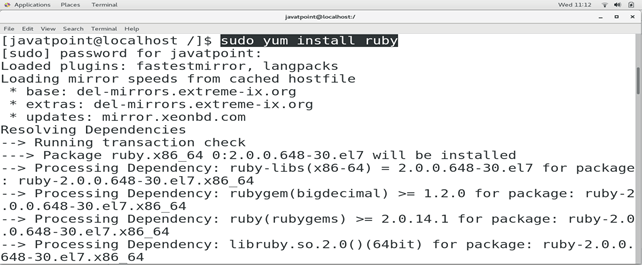
- #How to install gdb centos how to#
- #How to install gdb centos install#
- #How to install gdb centos update#
- #How to install gdb centos software#
> Package devtoolset-8-perftools.x86_64 0:8.1-1.el7 will be installed > Processing Dependency: devtoolset-8-perftools for package: 86_64 > Processing Dependency: devtoolset-8-runtime for package: 86_64 > Processing Dependency: devtoolset-8-toolchain for package: 86_64 > Package devtoolset-8.x86_64 0:8.1-1.el7 will be installed
#How to install gdb centos install#
STEP 2) Install the development tools and GNU GCC 8, which is part of the “devtools” ~]# yum install devtoolset-8 Verifying : 2/2Ĭentos-release-scl.noarch 0:Ĭentos-release-scl-rh.noarch 0: > Package centos-release-scl-rh.noarch 0: will be installedĬentos-release-scl noarch extras 12 kĬentos-release-scl-rh noarch extras 12 k > Processing Dependency: centos-release-scl-rh for package: > Package centos-release-scl.noarch 0: will be installed No packages marked for ~]# yum -y install centos-release-scl Loading mirror speeds from cached hostfile

#How to install gdb centos update#
Here are the steps how you can install GNU GCC 8 and how you can use it: STEP 1) Update your system and install the repository in your system
#How to install gdb centos software#
In one of them Software Collection – several months ago the GNU GCC 8.x packages were added!Īt present, the GNU GCC version is gcc (GCC) 8.3.1 20190311 (Red Hat 8.3.1-3).
#How to install gdb centos how to#
There is a graphical frontend for the ClamAV antivirus called ClamTk.It has been long after releasing the GNU GCC 8.x, but at last, there is a trusted repository, which has offered us packages for GNU GCC 8.x, which won’t break your system! Many of us prefer CentOS 7 because it offers free enterprise-class operating system and as mentioned in our article before – How to install new gcc and development tools under CentOS 7 there are a couple of approved external repositories for CentOS, which you can trust. To scan for viruses regularly, you can configure a cron job with the settings you want. # clamscan -i -recursive -move=/tmp/clamscan -log=/var/log/clamscan.log -exclude-dir="/var/www/administrator" /var/www If you want to exclude some of the directories from scanning, use the -exclude-dir parameter: You can also add the -log=/var/log/clamscan.log parameter to write all information about the scanning process in the log file you have specified: This command will scan all contents of the specified directory and move suspicious files to /tmp/clamscan.Īs we can see, the infected file has been moved to the specified directory: # clamscan -infected -recursive -move=/tmp/clamscan /var/www If you want to move suspicious files to a separate directory, run the scan using the -move parameter: With these parameters, the antivirus will immediately delete the infected files. # clamscan -infected -remove -recursive /var/www/

To scan the specified directory for viruses, use the following command: Then you can run the antivirus service or enable it:Īfter you have configured the ClamAV antivirus service, you can scan any server directory for viruses (scanner mode). To make it more convenient, we have deleted change the configuration in the file: Īfter = syslog.target nss-lookup.target network.targetĮxecStart = /usr/sbin/clamd -c /etc/clamd.d/nf The configuration file already exists, but you will have to change its name:

Like you did for freshclam, create a service for ClamAV. Then you can start your service and add it to startup: # nano /usr/lib/systemd/system/rviceĪnd add the following contents to it:


 0 kommentar(er)
0 kommentar(er)
